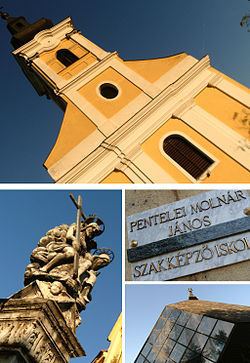 | ||
Pr ga 1 v ros prague praha star m sto
Óváros or Pentele is the central district of Dunaújváros in Hungary. Ráctemplomm, a Roman Catholic church is located here. Rácdomb Petőfi Sándor, Attila Streets, Sasberc, Óváros központ, Street Molnár Farkas, Isle of Szalk, and territory near Danube belong here. Latter includes Felső-fok, Street Magyar, the ex-barracks of the Soviets, and Őrhegy. Buildings here save the history of Pentele. Fences shows some parts of the national culture.
Contents
Drezda v ros
History
There are some findings dating back to the prehistory. There are human settlements here since 10 000 years. Loess was a very useful material for digging swales for living. In 434 Huns agreed with Romans and occupied Pannonia Later ostrogoths and Avars came here.
There is an Eastern Catholic monastery. Rávdomb was built at the same time, and then it was called Dunapentele.
There was built a hill fort here during the Middle Ages during the reign of Anjou dynasty in Hungary. Its original name (Pentele) may have Greek origin. There was a village around the fort. Church was rebuilt to a centre of the parish. It is known today as Ráczdomb. In 1526, after the Battle of Mohács, both the Hungarian and the Ottoman Armies crossed the village. There was built a Pfostenschlitzmauer here.
Temporally it was an inhabited region during the Ottoman rule in Hungary. As a result of the Peace of Vasvár, Rascianssettled down here. Up to the 18th century Ottomans left Pentele, and Serbs came here as residents. Current Baroque structure of the Greek church is from 1748. When number of Racians decreased, the owner of the village, József Rudnyánszky in 1743 settled here Hungarian serfs.
In 1833 it gained the status of market town in 1833, and there were markets hold here every week. Hungarian Revolution of 1848 had numerous victims from the town.
In 1870 it became a village, though pharmacy and veterinary physician, and its population significantly grew. During the Second World War 110 houses were destroyed by bombings. Building of Route 6 improved the economy of the settlement.
